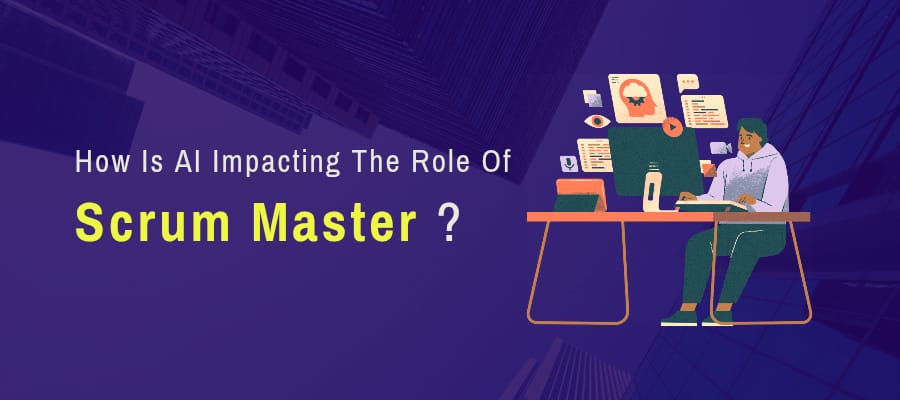How Is AI Impacting The Role Of Scrum Masters?

Have you ever wondered if AI could make or break the role of Scrum Masters? The rise of AI is transforming industrial workplaces, and Scrum Masters are no exception. AI is already changing how Scrum Masters handle their daily responsibilities. But like any tool, AI has its pros and cons. Let’s dive into both sides through today’s discussion!
AI Help Scrum Masters Optimize Sprint Planning
AI tools analyze past sprint data to predict team capacity and potential roadblocks. This helps Scrum Masters set realistic team goals. Tools like Jira Align use AI to suggest task priorities based on team performance. By relying on this, Scrum Masters can focus on coaching and guiding rather than crunching numbers.
AI Enhance Daily Standups for Scrum Masters
Scrum Masters can use AI to track team progress in real-time. Tools like Standuply summarize tasks completed, blockers, and new priorities, reducing the time spent on manual updates. The result? More focused daily standups and better team alignment.
AI Improve Retrospectives in Agile Teams
AI tools can gather and analyze team feedback quickly and accurately. Platforms like Miro now use AI to summarize team inputs during retrospectives. Scrum Masters get insights into what went well, what didn’t, and where to improve. This allows teams to address issues faster and build stronger workflows.
AI Provide Predictive Insights for Scrum Masters
AI doesn’t just reflect on past performance. It predicts potential risks and delays. Tools like Monday.com leverage AI to flag misaligned priorities or resource gaps. Scrum Masters can use this data to mitigate issues before they snowball into more significant problems.
AI Assist Scrum Masters in Monitoring Team Performance
AI-powered dashboards offer a clear view of team efficiency and individual performance trends. These insights help Scrum Masters spot bottlenecks or team dynamics affecting productivity. Tools like ClickUp ensure that every team member stays on track and has fewer misunderstandings.
AI Simplify Reporting for Scrum Masters
Manually compiling reports eats up valuable time. AI-powered reporting tools like Tableau automate this task. Scrum Masters can generate accurate reports in minutes instead of hours. These reports also provide deeper insights, making it easier to communicate with stakeholders.
AI Streamline Backlog Management for Scrum Teams
AI tools recommend prioritizing backlog items based on business goals and team capacity. For instance, Jira's AI features suggest tasks that align with sprint objectives. Scrum Masters spend less time sorting backlogs and more time strategizing.
AI Drive Continuous Improvement in Agile Practices
Continuous improvement is at the heart of Agile. AI tools like Retrium collect data on Agile ceremonies. They highlight gaps and suggest actionable ways to improve them. This ensures that teams don’t just maintain standards—they exceed them.
The Other Side: Negative Impacts of AI on Scrum Masters
Indeed, AI offers speed and precision, but it’s not without flaws. Scrum Masters, too, need to address these challenges!
AI Risks Overshadowing Human Judgment
AI relies on data. But what happens when that data is incomplete or biased? Scrum Masters might blindly follow AI insights, even when they don’t align with real team needs. AI tools can’t fully grasp team dynamics and thus make human judgment irreplaceable.
Increased Dependence on AI Tools
Overreliance on AI can reduce a Scrum Master’s skillset. For example, if AI handles backlog prioritization, Scrum Masters might lose their edge in critical decision-making. This dependency can weaken their role in leading teams effectively.
AI May Limit Team Autonomy
Agile thrives on collaboration and team autonomy. Overusing AI tools might make teams feel micromanaged. Constant monitoring through AI dashboards can create a culture of mistrust. Teams need to feel empowered, not watched.
Ethical Concerns Around Data Privacy
AI tools require access to vast amounts of team data. This raises concerns about how this data is stored and used. Scrum Masters might unknowingly expose sensitive information, leading to breaches of trust.
The Risk of Misinterpretation
AI outputs can sometimes be misinterpreted. For example, an AI tool might flag a slowdown as a performance issue, but the real cause might be something human, like personal challenges or burnout. Misinterpretations like this can harm team morale.
AI Can’t Replace Emotional Intelligence
Scrum Masters do more than manage tasks. They mentor, coach, and mediate. AI tools can’t replace these human qualities. Teams still need empathy and intuition, which only a human Scrum Master can provide.
Finding The Right Balance!
AI is a tool, not a replacement. The key lies in balancing its strengths with human oversight. Scrum Masters should use AI for tasks like analysis and reporting. But they must lead with emotional intelligence, creativity, and leadership.
By responsibly embracing AI, Scrum Masters can enhance their effectiveness without losing their human touch. This balanced approach ensures that Agile teams thrive in an increasingly tech-driven world.
Reference:
https://www.scrum.org/resources/blog/demystifying-misconception-role-scrum-masters-ai-driven-future




